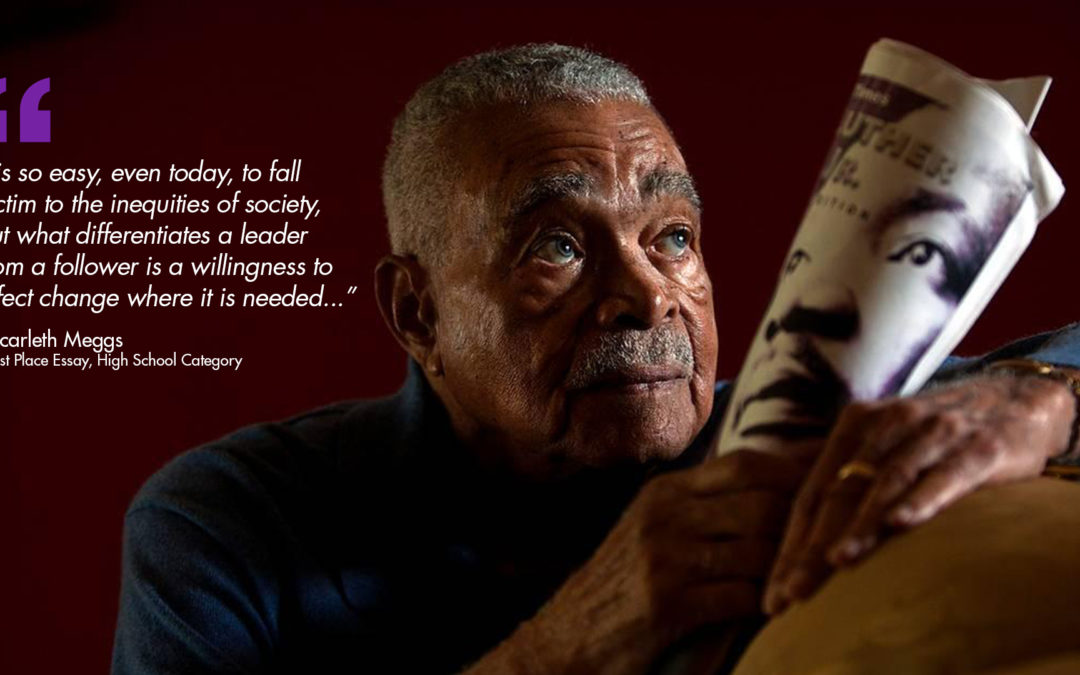Honoring Leadership
– Inaugural Black History Month Essay Contest In Honor of the late Garth C. Reeves, Sr.
Breakthrough Miami is thrilled to share the inaugural 2020 Black History Month Essay Contest in honor of veteran, community leader, equality and civil rights activist, and Black Press Pioneer, the late Garth C. Reeves, Sr. Earlier this year, Breakthrough Miami Scholars in grades 5-12 were invited to research and generate compelling narratives inspired by our theme of “Celebrating Untold Stories and Contributions of African-Americans in South Florida.” Breakthrough Miami received nine submissions to the inaugural essay contest. Furthering our theme of “Celebrating Untold Stories and Contributions of African-Americans in South Florida”, Scholars were encouraged to discover South Florida history of African-Americans who made an impact on their community and whose stories are seldom told. The diverse subjects of their essays included great South Floridians who inspire future generations including the honoree Garth C. Reeves, Sr., Dana Albert Dorsey, Dr. James F. Sistruck, Mary McLeod Bethune, Marie Faulkner Brown, and Peggy Ann Quince.We are pleased to announce the winners in each category.
Elementary School Winners:
Ivan Reyna, Grade 5,
South Miami K-8 Center
1st. Place – Garth C Reeves, Sr., How One Man Helped His Entire Community
Middle School Winners:
Ronald Smith, Grade 8,
Coral Reef Montessori Academy
1st. Place – Visionary
Jahaira Flores, Grade 7
Highland Oaks Middle School
2nd Place – Mary McLeod Bethune
Aisar Hernandez, Grade 6
Rockway Middle School
3rd Place – D.A. Dorsey
High School Winners:
Scarleth Meggs, Grade 12
Young Women’s Preparatory Academy
1st. Place – Dr. James F. Sistruck, A Medical Pioneer for Black Communities in South Florida
Jaheim Golden, Grade 10
Young Men’s Preparatory Academy
2nd Place – Spunk on Sistruck
The essay contest was established to honor Dr. Reeves, publisher emeritus of The Miami Times, who passed away at 100 in late 2019. As the only job he had, aside from serving in the Army during World War II, Reeves’ energy in running the landmark black-owned paper would impact the lives of countless families in South Florida. He’d found his life’s calling — to serve as a voice for the black community. He knew no better job. Reeves, who oversaw the black-owned paper his father initially printed one page at a time on a small hand press in a modest Miami home upon its founding in 1923, and who kept it in the family as it evolved into its digital edition today, died two months after his daughter, Rachel, passed. She was the publisher of The Miami Times, assuming the mantle of leadership from her father and grandfather. (Miami Herald, November 2019) Breakthrough Miami is proud to have Regina Jolivette-Frazier, Reeves’ niece, as a long standing member of the executive committee of our board of directors.
Garth C. Reeves, Sr. is a tall tree in the forest in which his community sought salvage from the elements. His work in the publishing world and ultimately his founding of the Miami Times gave voice to countless stories otherwise untold. What’s reflected in the sentiments of our scholars in their essay entries is a resonating theme of perseverance, hard work, and justice, similar themes found in the ethos of Breakthrough Miami programming. Our scholars did a wonderful job making the connection between the lessons learned from researching their chosen pioneers and what they continue to learn as Breakthrough Miami scholars. Below, are a few excerpts from our winning essays that demonstrate just that.
Winning Essays
 Ivan Reyna, Grade 5
South Miami K-8, Breakthrough Miami at Ransom Everglades School
Ivan Reyna, Grade 5
South Miami K-8, Breakthrough Miami at Ransom Everglades School
 Ronald Smith, Grade 8
Coral Reef Montessori Academy, Breakthrough Miami at Gulliver Prep Campus
Ronald Smith, Grade 8
Coral Reef Montessori Academy, Breakthrough Miami at Gulliver Prep Campus
Dr. James F. Sistrunk, a Medical Pioneer for Black Communities in South Florida
Access to emergency medical treatment has not consistently been a guaranteed right, especially to African Americans in the 1900s. Black people were not allowed to get medical assistance or an education despite their needs or qualifications. Few, however, did manage to enter white-owned and operated schools and hospitals and become doctors and physicians. These few African-Americans dealt with racism on a day-to-day basis and were ostracized by others despite having similar qualifications. These were the conditions black people faced: you had to work two times harder than your white counterpart for everything you wanted. Dr. James Sistrunk did just that.
After serving in World War I, Dr. James Sistrunk moved to Florida to practice medicine; however, despite being a qualified surgeon, he was not allowed to perform surgical procedures in white hospitals. The easiest course of action in response to this would be to find another career, but the perseverant veteran had other plans. At the age of 48, Dr. Sistrunk helped establish the first hospital in Fort Lauderdale for black people. The facility, Provident Hospital, was where he delivered over 5,000 plus babies over more than four decades of practice. Outside of the facility, he would often go on house calls to help those who were unable to pay for medical treatment. This hospital broke racial barriers by instituting a training program for black medics during a time where white hospitals wouldn’t allow them into the building. Dr. James Sistrunk was not only a pioneer in the medical field, but he was also a hero in the lives of many African-Americans who had a right to medical care but were unable to receive it as a result of the injustices of America’s racial caste system.
His story, and others like him, is one of struggle, perseverance, and hard work, and he had the mind and heart to embark on a journey that few were brave enough to take on. It is so easy, even today, to fall victim to the inequities of society, but what differentiates a leader from a follower is a willingness to effect change where it is needed, the same way Dr. Sistrunk did. Instead of giving up because he was not allowed to work in a white hospital, he went on to make his own hospital, one where those who were tossed aside were quickly taken in and treated.
I can catch a glimpse of myself in the story of Dr. Sistrunk. Everyone should take a page from the book that is his life and incorporate it into your own stories. Doing so would add inimitable skills and strengths that could propel someone to unparalleled success. I would adapt his perseverance into my life and safeguard my and others’ right to a good education, something I value more than anything in the world. Where I am from, not everyone has adequate access to education, in the same way African-Americans didn’t have access to medical treatment in the 1900s here in Florida. Like him, I want to effect change in a system that unrightfully puts those of certain socio-economic standings on the back burner. The service Dr. James Sistrunk provided for my community is unbridled, and I hope to follow in his footsteps by making a change in my community in the future.
Works Cited
Dr. James Sistrunk, Broward’s First Black Doctor. n.d. February 2020.

Scarleth Meggs, Grade 12
Young Women’s Preparatory Academy, BreakthroughU
Join the Breakthrough Village. Change lives. Create Leaders. Transform our Community.
Breaking through starts with you. Get involved and make a gift today.

